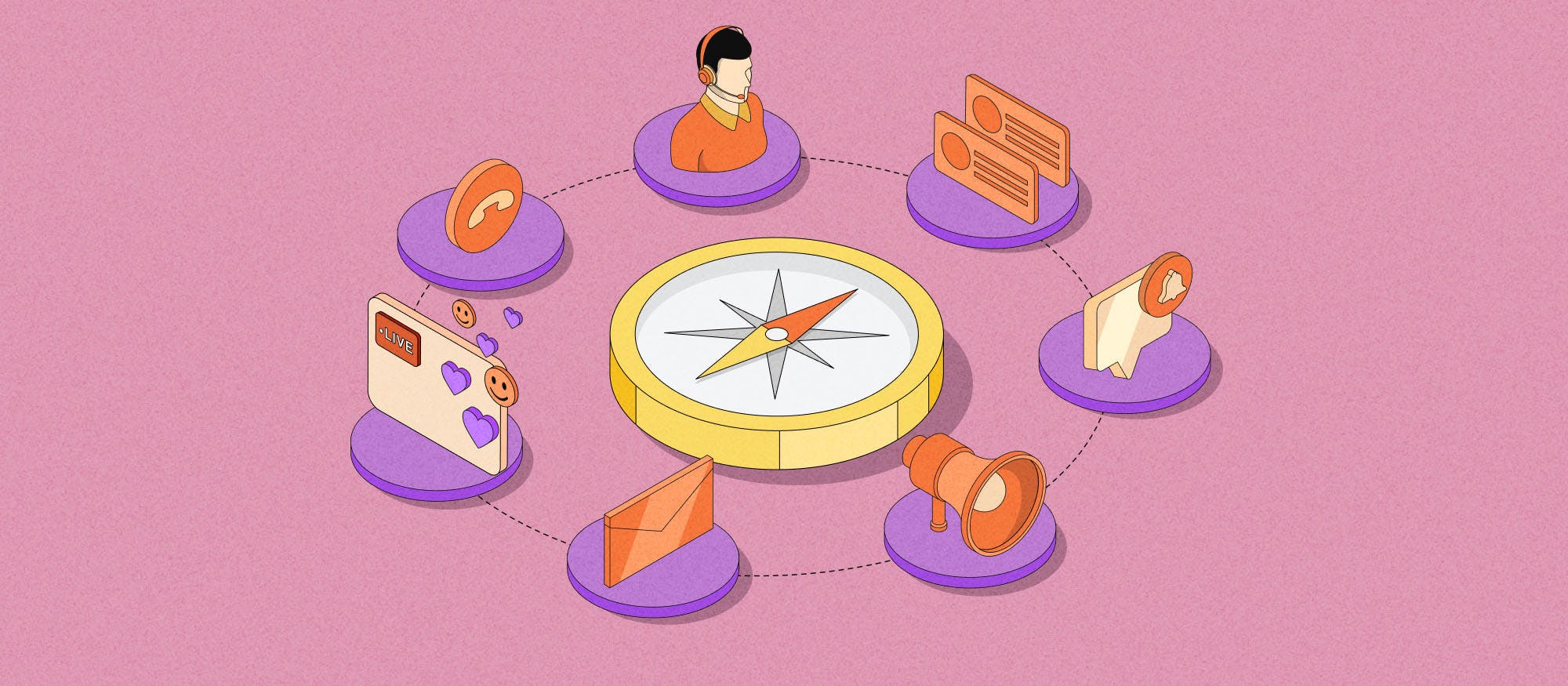The mid-year stats you need to know about customer comms in 2023

Every January, our media space is flooded with content about top trends in B2C. The New Year brings glowing optimism about everything your team can achieve in the next 12 months — and everyone starts the year energized.
By mid-year, though, you’re searching for inspiration again. The customer landscape has already changed, and January’s predictions may be slightly stale.
That’s why Sendbird has published our mid-year report, Consumer Communication Preferences for Sales, Marketing and Customer Service (June 2023). We want to help you reinvigorate and finetune your strategy for the rest of 2023 — all based on the latest trends and preferences in customer communications.
In this article, you will find five highlights from our research. To get the full story — and what you should do about it — download the full report.

Elevate in-app engagement eBook
First, how we conducted the survey
Sendbird partnered with Arion Research to conduct a global survey of consumer communication preferences. Responses were collected from 1,200 consumers in 14 countries from January to February of 2023.
About a third of respondents were from the Asia Pacific region (APAC), a third from the Americas, and a third from the Middle East and Africa region (EMAE). Their ages ranged from 18 to 71+, with most falling between 21 and 50.
#1: Customers aren’t necessarily providing their real contact information

Not long ago, a cell phone offered relief from the telemarketing calls that plagued landlines. But today, the cell phone is another marketing channel — and consumers are, understandably, fatigued. About a quarter of survey respondents said they would switch brands or not renew their subscriptions if a company sent too many text/SMS messages.
People are so frustrated, in fact, that 29% of U.S. consumers reported giving false contact information so that businesses wouldn’t spam or over-communicate with them.
Try a mid-year check-in:
How many messages does a customer receive on average from your company—your team and others?
What does your unsubscription rate say about your SMS strategy? Has customers’ tolerance for your message cadence changed in the last six months?
Is your SMS program providing value to customers? Have the things your customer segments valued changed?
#2: Consumers are actively trying to perceive risk and act accordingly
People seem to be getting savvier when it comes to online activities. Our survey results suggest that consumers are analyzing the risk of conducting an activity online and then choosing a channel with a risk profile that matches. For instance, nearly 50% of customers trust chatbots (perceived as less secure) for lower-risk activities such as entertainment and online shopping. However, only 25% trusted chatbots for banking and healthcare, activities that involve more sensitive information.
Try a mid-year check-in:
How do customers perceive risk in your sector — specifically in conducting activities online?
Does your channel strategy prioritize the channels that customers trust?
If you’re in a sector that customers perceive as high risk, how can you build trust with consumers for the rest of this year? A brand strategy, an executive communication plan, or product design features?
#3: Contextual communication may be growing
TikTok and out-of-home ads may be flashy, but email is still a customer favorite for receiving new offers and special discounts. Sendbird’s analysts believe this is because email gives a brand plenty of space for delivering detailed, customized messages directly into their inbox. And the customer can take a look whenever they want.
However, our survey indicated an interesting exception: Although SMS is second to last in overall preference, about 25% found value in “context-aware communications,” or SMS/text notifications based on location or time of day. For example, a retail store could offer nearby customers a temporary discount, or a fast-casual chain might send a coupon just before lunch.
Try a mid-year check-in:
If your business has an opportunity for location-based offers, what are the first three steps your team would need to take to explore it?
If there’s an opportunity for time-based offers, brainstorm what those might be. What would they look like? Who would they target?
What data-driven approaches can help us identify the right time and context for sharing deals with customers?
#4: Live chat may have exploded, but email is still preferred across generations

Appealing to Gen Z felt like a mystery to many marketers and customer service directors—but it turns out their preferences are similar to older generations. Over 1 in 2 of Gen Z, Millennials, and Gen Z prefer email as a communications channel for customer service.
To us, the reasons are clear. Almost everyone uses email, and a single exchange has enough space to share the full story; also email provides a paper trail.
Try a mid-year check-in:
Take a look at your strategy for communicating with Gen Z. Which channels are prioritized and which aren’t?
Does your customer support team communicate with different generations differently? If so, are there opportunities to streamline your efforts, at least for email strategy?
Knowing that email is a top channel, how can you maximize the advantages (e.g., ample space) that it offers?
#5: Being put on hold, unsurprisingly, isn’t appreciated
This last insight may sound obvious, but recognizing the gravity is essential for a well-functioning sales org. About 57% of consumers surveyed chose to switch brands or not renew a subscription simply because of being put on hold when they contacted a business. In the live chat era, the research suggests your customers aren’t willing to wait—and they will find a brand that won’t make them.
Try a mid-year check-in:
How can we lessen or eliminate wait times for customers contacting your business? Would a hybrid model of chatbots and human support representatives help?
Are there inefficiencies in the customer support system that contribute to customers being put on hold?
What proactive steps can we take to retain customers who might leave due to negative customer service experiences?
The “so what” of customer communications trends
As you evaluate your customer communications program, remember that chasing every trend is a surefire way to exhaust your team. Consider which patterns actually make sense for your business to capitalize on. And as the year continues, keep an eye on the trends that seem to be sticking and those that are fading. This kind of careful discernment will protect your team’s bandwidth while still helping your brand stay relevant.
The online space is ever-changing, and we’re here to help you keep up. Check out some of our latest resources and follow along with our blog:
Want to see the research for yourself?
Businesses pay thousands for up-to-date and accurate consumer research. We’re giving away the insights from our report with Arion Research for free. To get the survey results and read more of our takeaways, download the report.










